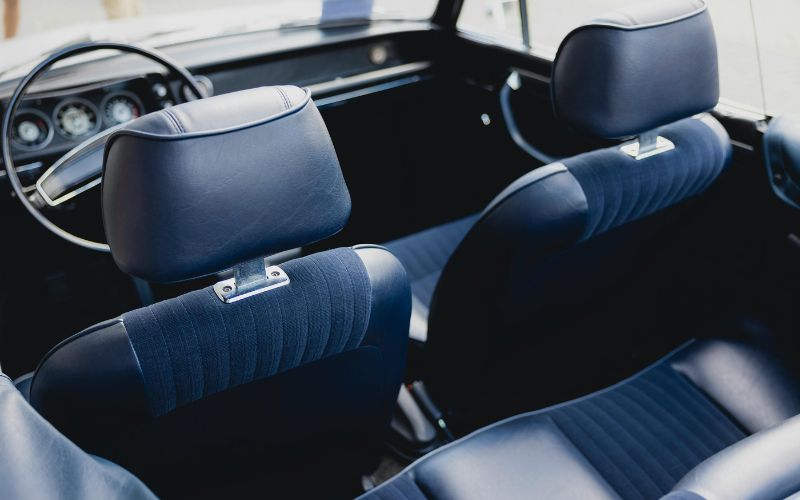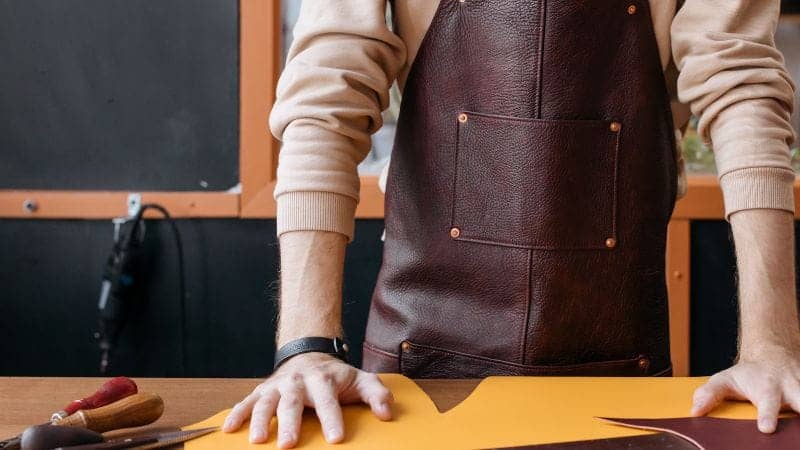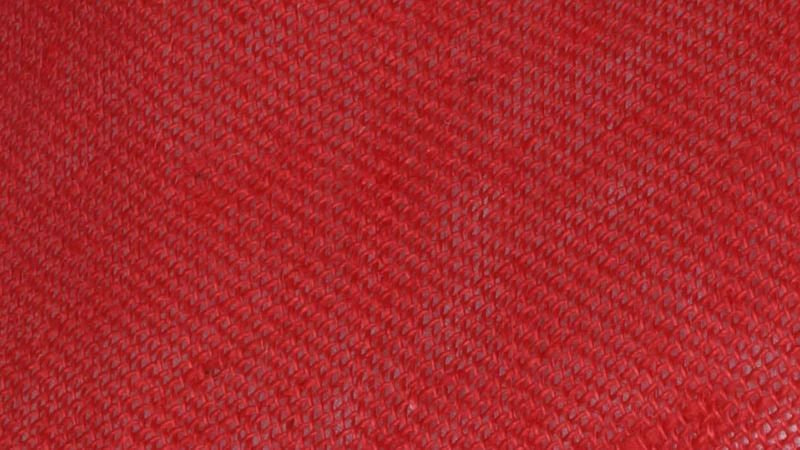Corduroy is a distinctive and beloved textile known for its unique ridged texture, durability, and versatility. From its origins in ancient Egypt to its modern-day use in fashion and home decor, corduroy has a rich history that spans centuries. But what exactly is this fabric made of, and how has its composition evolved over time?
In this comprehensive guide, we will delve into the various materials and fibers used to create corduroy, exploring its traditional cotton construction as well as modern blends incorporating polyester, wool, and spandex.
We will also trace the fascinating origins and development of corduroy, from the early fustian fabrics to the textile innovations of the Industrial Revolution that gave rise to the corduroy we know today.
Whether you are a fashion enthusiast, a textile history buff, or simply curious about the makeup of this iconic fabric, this article will provide you with a thorough understanding of corduroy’s composition and the journey it has taken to become a staple in our wardrobes and homes.
So let’s unravel the threads of corduroy and discover what makes this textile so special.
What is Corduroy Fabric?
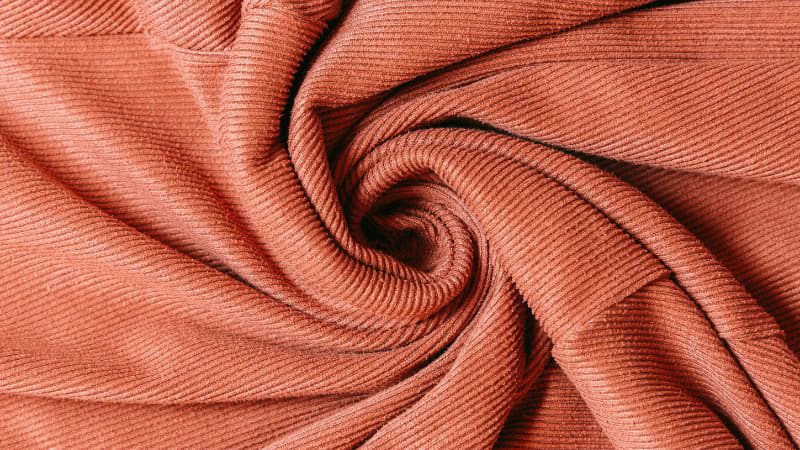
Corduroy is a textile that’s known for its distinctive “cord” or ridged pattern, which actually consists of wales or raised vertical ribs.
Wale count is a term you’ll often hear associated with corduroy. It tells you the number of ridges per inch. A higher wale count means the fabric will have finer, more numerous cords, which results in a softer and more flexible feel. Meanwhile, a lower wale count gives you a chunkier, bolder texture.
Traditionally corduroy is made from cotton or a cotton blend, suitable for clothing items like pants, jackets, and even children’s wear.
It’s interesting to note that the name “corduroy” comes from “Duroy,” a coarse woolen cloth once associated with the fabric, though modern-day corduroy usually steers away from wool.
What is the History of Corduroy Fabric?
Corduroy, with its distinctive ridges known as “wales,” has a storied past that transforms from a utilitarian textile to a fashion statement. As you explore its journey through time, you’ll uncover its transitions from ancient origins to modern-day prominence.
Historical Significance
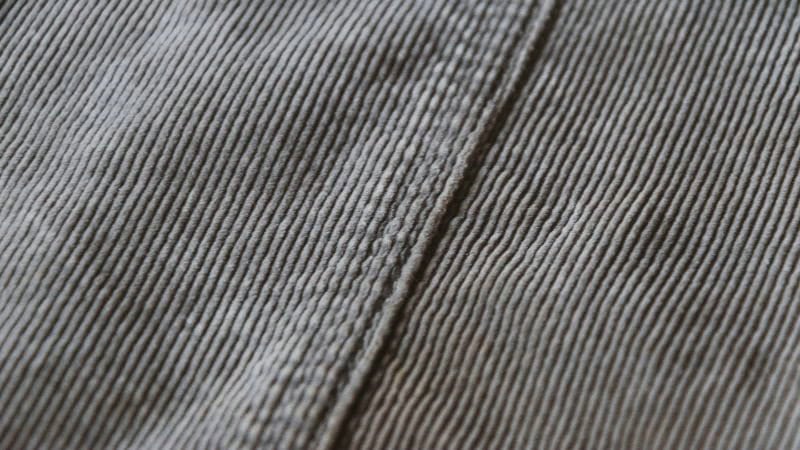
Corduroy’s origins can be traced as far back as ancient Egypt, where remnants of its ancestral fabric, fustian, were found. Fustian was a robust, woven cloth that is considered a predecessor to modern corduroy.
It wasn’t until much later, in England, that corduroy began to solidify its status. Here, in the industrial city of Manchester, the fabric was produced on a large scale, earning the nickname ‘Manchester cloth’.
The term corduroy itself might remind you of the French “corde du roi,” which translates to “cord of the king.”
However, this connection to the French monarchy is likely a romantic myth. Nonetheless, the fabric gained widespread popularity throughout Europe.
By the 1970s, corduroy became a symbol of fashion and anti-establishment, often associated with academics and the intellectual counterculture.
Modern Evolution
As you fast-forward to today, the evolution of corduroy is marked by shifts in popularity and technique. From a practical standpoint, China and India have become key producers, taking advantage of modern manufacturing methods to cater to the global demand for the fabric.
In the fashion industry, corduroy has experienced a renaissance, especially in colder seasons, for its warmth and versatility. Nowadays, you can find corduroy used in everything from pants and jackets to accessories, confirming that the fabric has moved beyond its traditional roles. An interesting note is that corduroy’s wale number, which indicates the number of ridges per inch, has become a stylistic choice, with lower numbers suggesting a chunkier texture suitable for casual wear, while higher numbers offer a finer, dressier look.
What is the Weave Structure of Corduroy Fabric?
Corduroy is a pile fabric where the pile or cords are always formed with the filling (weft) yarn. The base fabric is woven with either a plain weave or a twill weave.
For corduroy, wales can be of varying thicknesses; wide wale corduroy has thicker ridges, giving it a more pronounced texture whereas finer wales produce a subtler, denser texture.
In a plain weave, the warp and weft yarns cross over and under one another in an alternating pattern. This is the most common base weave for corduroy.
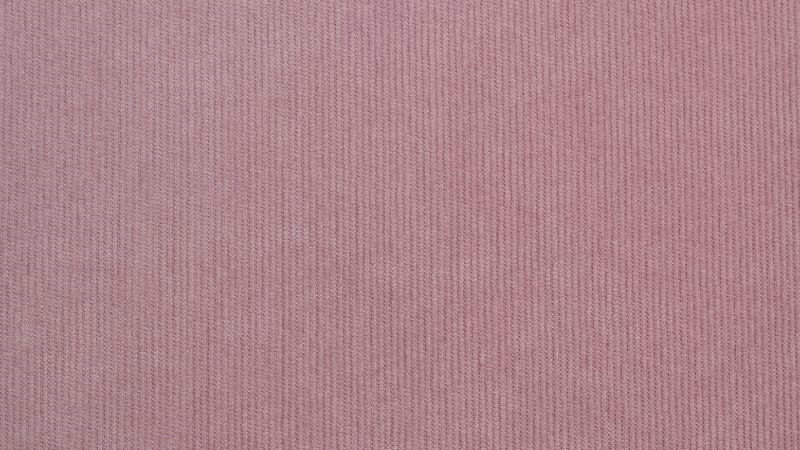
Twill weave involves passing the weft thread over one or more warp threads and then under two or more warp threads with a step or offset between rows to create a diagonal pattern.
This is the underlying structure that gives corduroy both its strength and its classic visual and tactile texture.
After weaving the base fabric, additional weft yarns are woven in, floating over multiple warp yarns to form long floats
The pile can be cut into a few different configurations:
- A V-shaped pile where the floats are simply cut
- A W-shaped pile where the floats interlace with the ground warp in multiple places before being cut, making the pile more secure
- A combination of V-shaped and W-shaped piles for pronounced wales
Needlecord and Pincord
Needlecord, also known as pincord or pinwale, is a type of corduroy known for its very fine ridges. The terms needlecord and pincord specifically refer to the width of the cord – with these styles featuring the highest number of wales per inch, reaching as fine as 16 to 21 wales. This gives the fabric a soft, fine texture that is sophisticated and less bulky than wider wale varieties.
What are the Different Types of Corduroy Fabric?
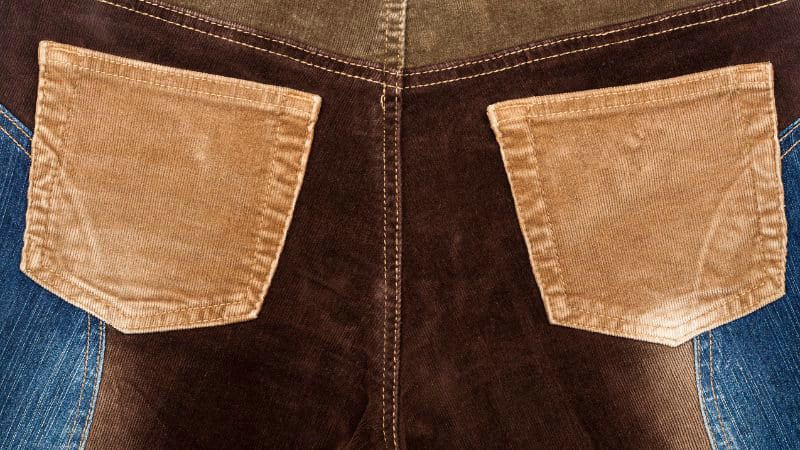
There are several main types of corduroy fabric classified by the size and number of distinctive ridges or “wales” per inch:
Standard Corduroy
Standard corduroy is the most commonly used type of corduroy for pants, jackets, and other garments which has 8-13 wales per inch, with 11 wales being.
Elephant/Jumbo Cord
Elephant cord has very wide, thick ridges with 1.5-6 wales per inch, often used for upholstery projects like couches and chairs as well as heavy-duty jackets.
Pinwale/Needlecord
Pinwale is the finest type of corduroy, often used for shirts, dresses, trousers, and children’s clothing, which features many tiny, dense ridges with 14-21 wales per inch.
Pincord/Babycord
Pincord is a very fine corduroy with 18-25 wales per inch. Similar uses as pinwale corduroy for delicate garments and baby clothes
A few other specialty types of corduroy include:
- Pigment-dyed corduroy, which has a mottled appearance that becomes more distinct with washing
- Stretch corduroy blended with spandex for added flexibility, which is often used in children’s clothes
- Bedford cord which has an uncut pile, resulting in less prominent ridges
What is the Fiber Content of Corduroy Fabric?
Cotton
Corduroy is usually made from 100% cotton. Cotton is the primary fiber used in corduroy production. The corduroy made from cotton is soft, breathable, durable, and has a luxurious feel which is hypoallergenic and suitable for sensitive skin.
Cotton and Polyester Blends
Corduroy can also be made from a blend of cotton and polyester fibers. Common blends include 98% cotton/2% spandex and 99% cotton/1% spandex.
Adding polyester to cotton improves the fabric’s durability, wrinkle resistance and shrinkage control compared to 100% cotton corduroy.
Wool
Corduroy is sometimes made with wool, but the ridges are less prominent compared to cotton or polyester blends.
Wool corduroy is a more sustainable option as it has a lower environmental impact in production.
Spandex/Elastane Blends
Stretch corduroy incorporates a small amount of spandex or elastane fibers for enhanced flexibility and comfort.
How to Care the Corduroy Fabric
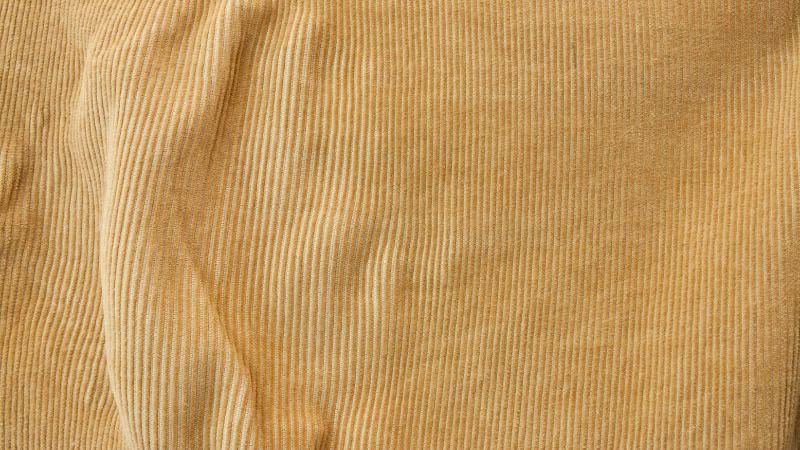
Corduroy’s durability is one of its key features, but to ensure your corduroy items remain in top condition, understanding proper care and maintenance is essential.
Washing:
- Always check the care label first for specific washing instructions.
- Turn corduroy garments inside out before washing to protect the pile.
- Wash corduroy in cold or lukewarm water on a gentle cycle. Hot water can cause shrinking and color fading.
- Use a mild detergent and avoid bleach which can damage the fibers.
- Wash corduroy separately or with like colors to avoid color bleeding.
- Never wash corduroy with lint-producing fabrics like towels or fleece as the lint is very difficult to remove from the ridges
Drying:
- Air drying is best for corduroy to maintain its texture and prevent shrinking.
- If using a dryer, tumble dry on low heat and remove while still slightly damp. High heat can stiffen and shrink corduroy.
- Avoid using clothespins when line drying as they can leave marks on the fabric.
Brushing:
- Gently brush the fabric to maintain its soft, plush texture and to prevent the matting of the corduroy’s wales (ridges). Do this only when necessary and with a soft-bristled brush.
Ironing:
- Ironing is generally not recommended for corduroy as it can crush and flatten the pile.
- If ironing is necessary, use a low heat setting, iron on the reverse side, and place a cloth between the iron and fabric or place a thin cloth between the fabric and the iron to protect the ridges.
- Steaming is a better option to remove wrinkles and revive the nap. Hang the garment and steam from a distance.
Finishing and Dyeing:
- Over time, the color of corduroy may fade, especially if it’s frequently washed or exposed to sunlight. If dyeing is needed, utilize color-safe dyes and follow the instructions carefully.
General Tips for Longevity:
- Avoid overwashing to reduce wear and tear.
- When not in use, store corduroy garments in a cool, dry place away from direct sunlight.
Removing Stains from Corduroy
- Address any stains promptly before they set in.
- For water-based stains, blot with a damp cloth and mild detergen. Don’t rub as this can spread the stain.
- For oil-based stains, use a solvent-based cleaner or dry cleaning fluid. Test on an inconspicuous area first.
- A baking soda and water paste can help lift stubborn stains. Apply the paste, let dry, then brush off.



